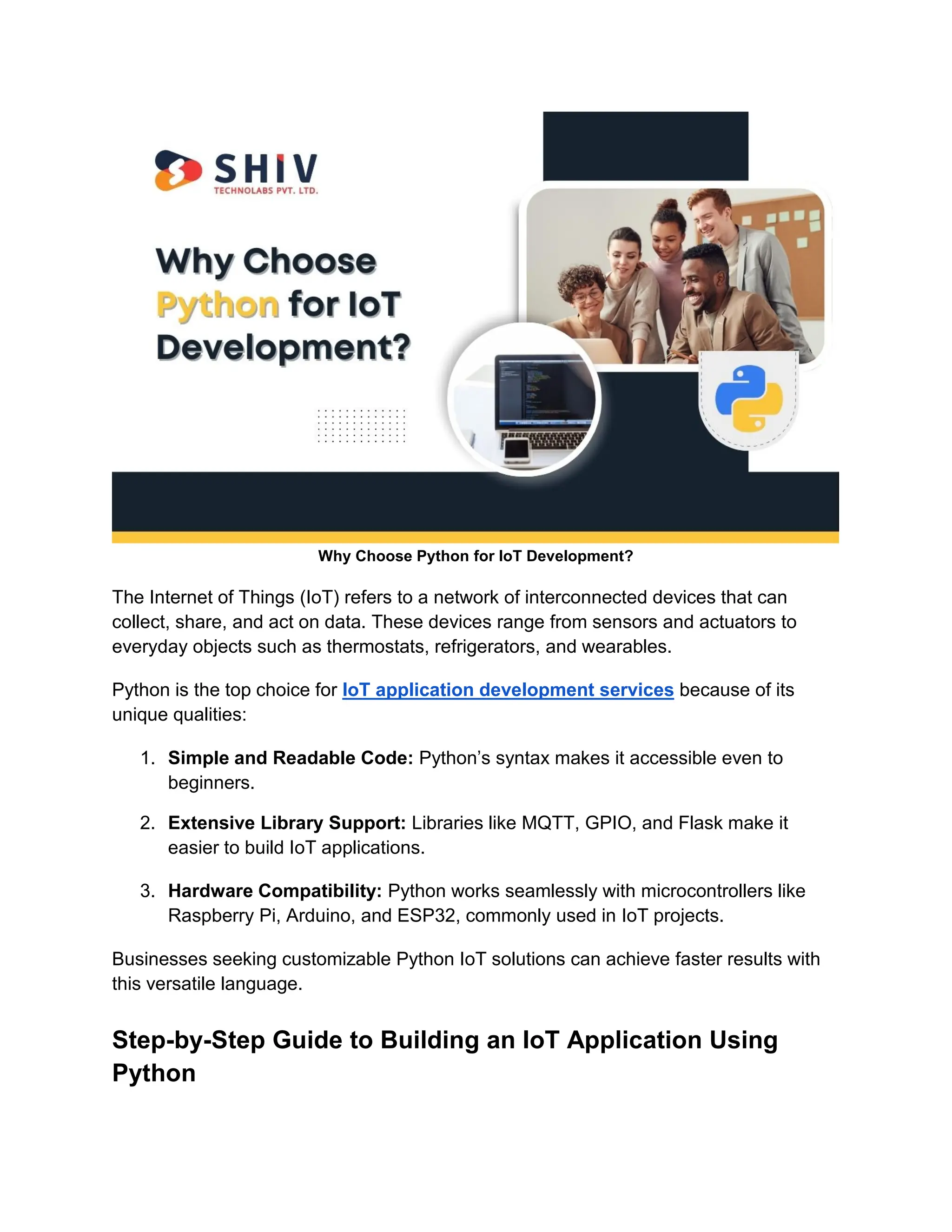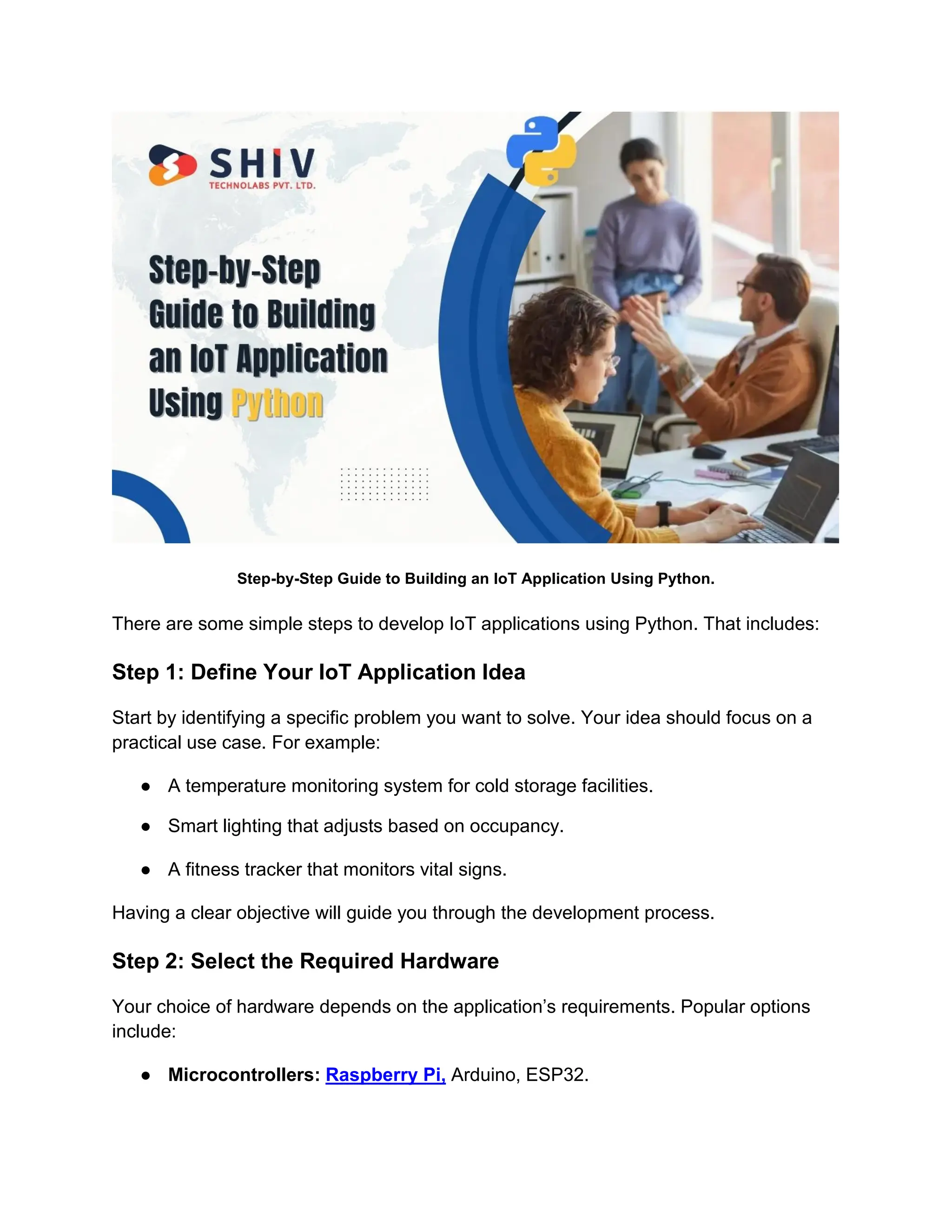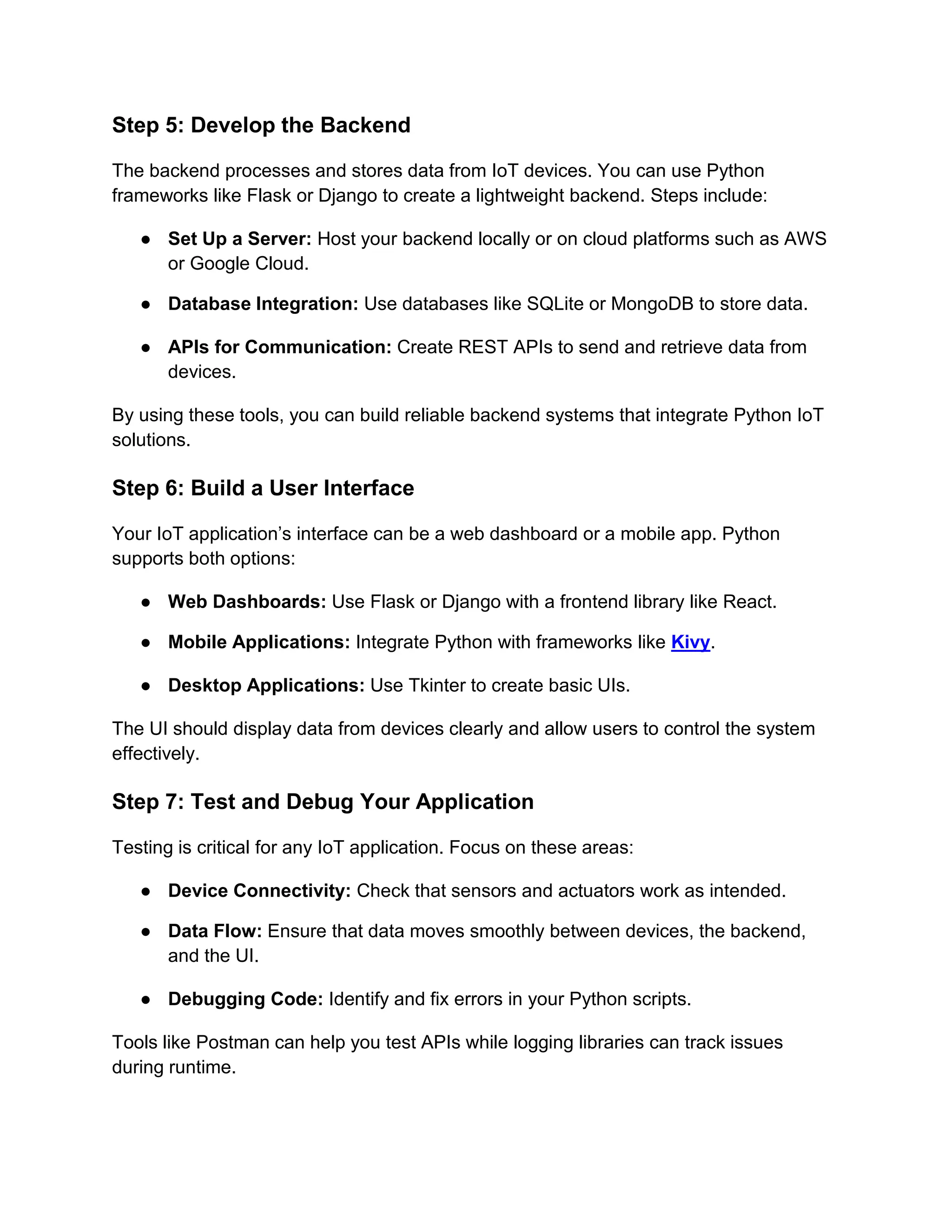This document provides a comprehensive step-by-step guide on building IoT applications using Python, emphasizing its simplicity and vast library support. It covers essential steps from defining the application idea, selecting hardware, and setting up the development environment to establishing communication, developing the backend, and testing. The guide aims to equip both beginners and experienced developers with the knowledge needed to create efficient and scalable IoT solutions.






